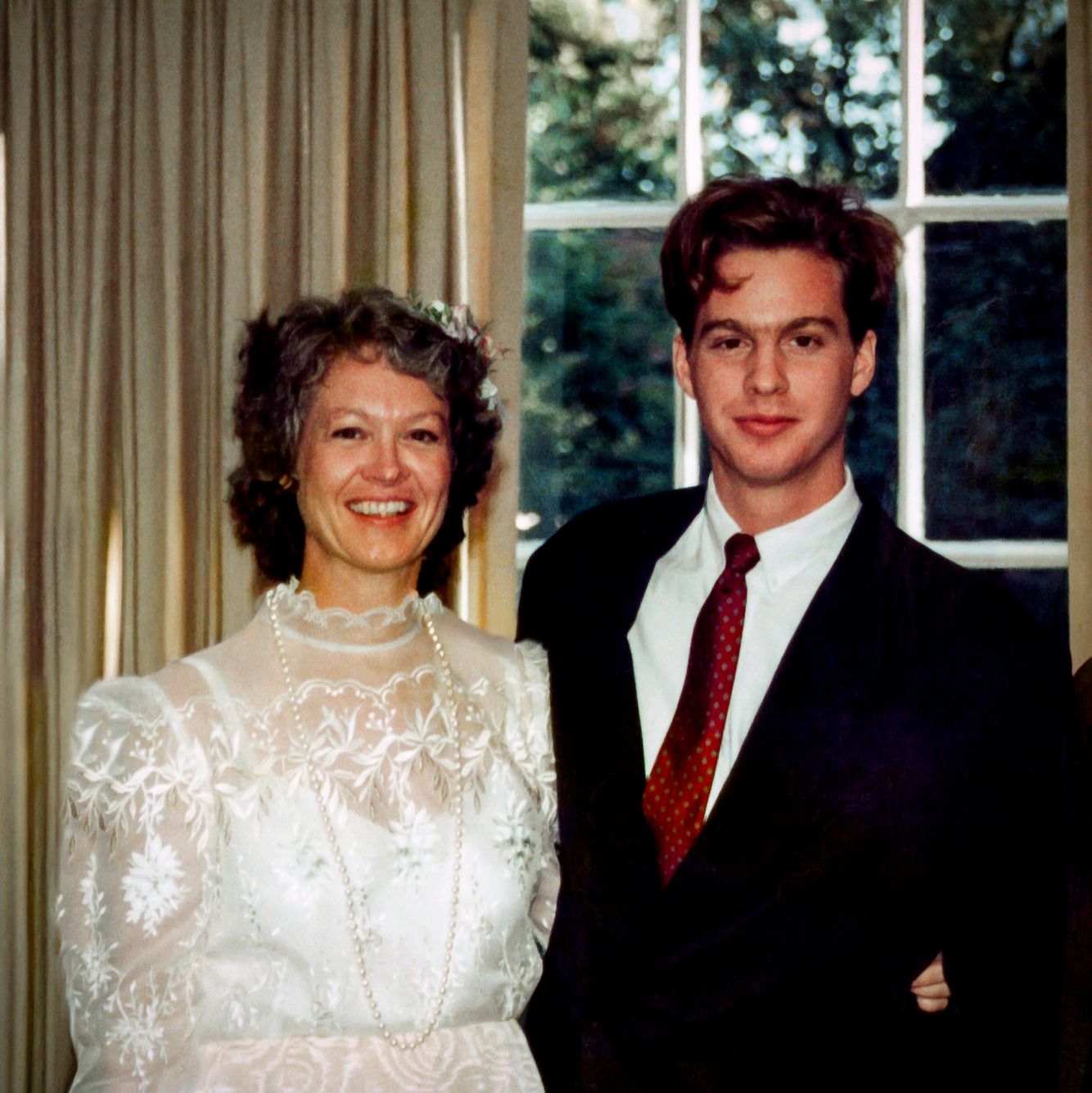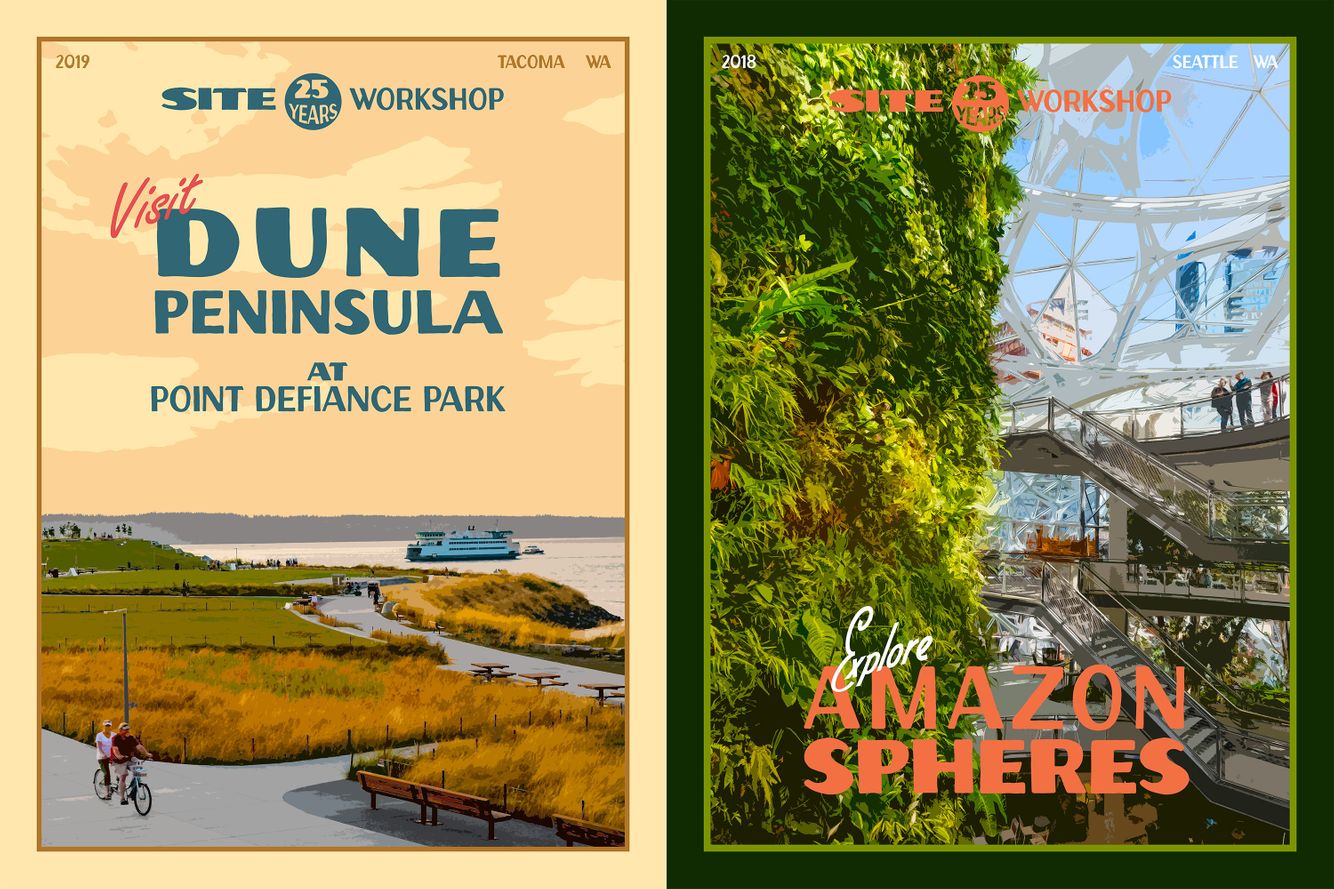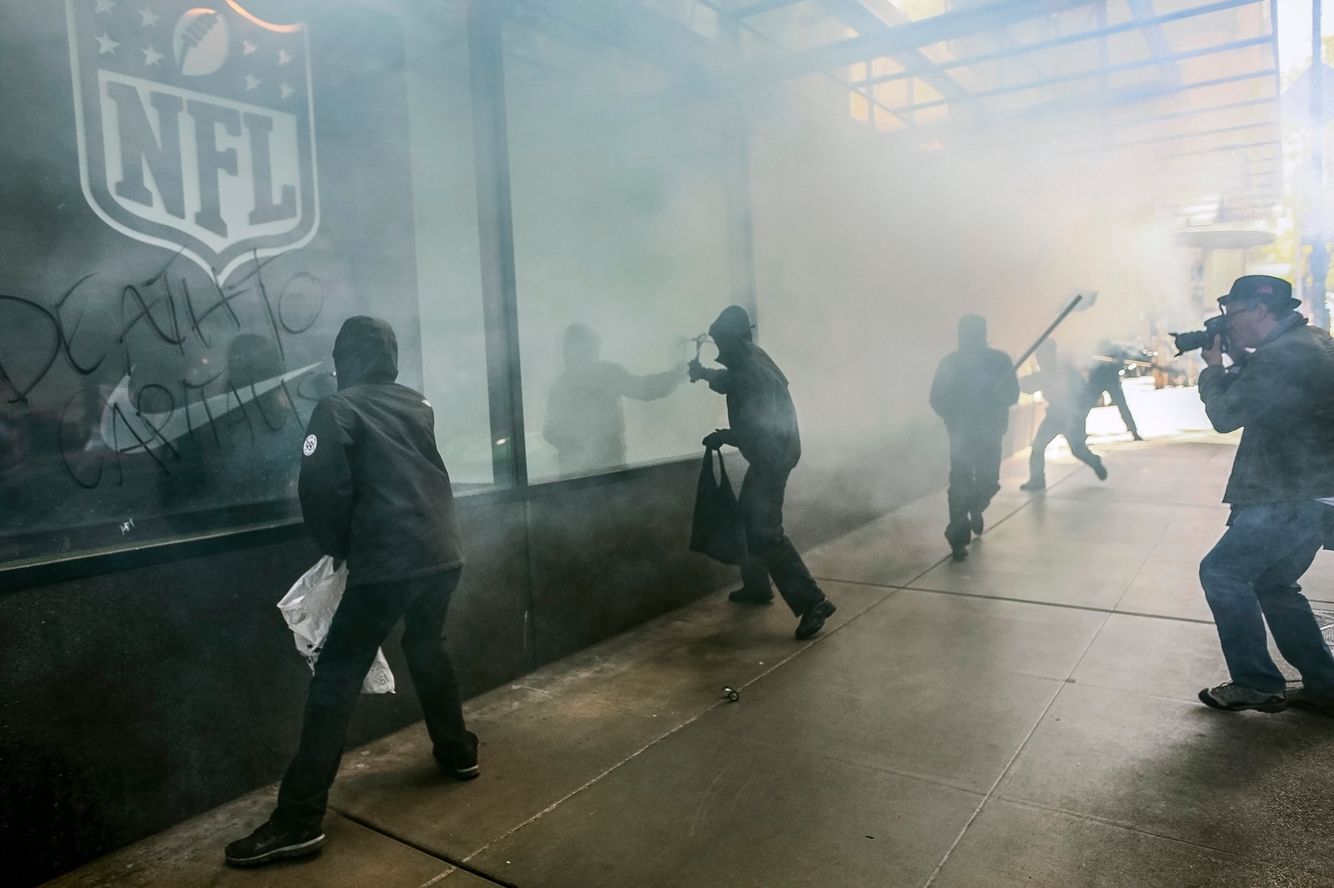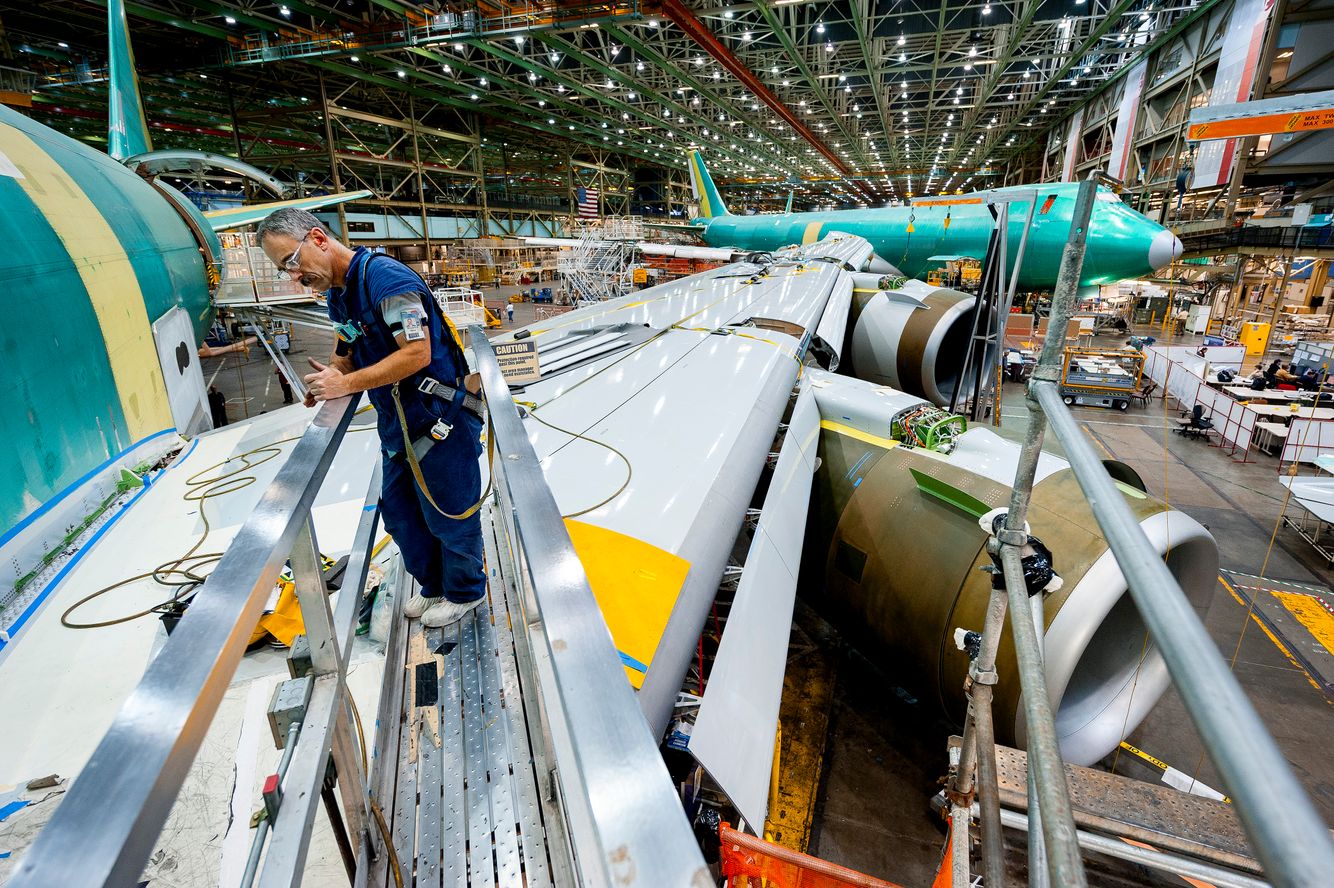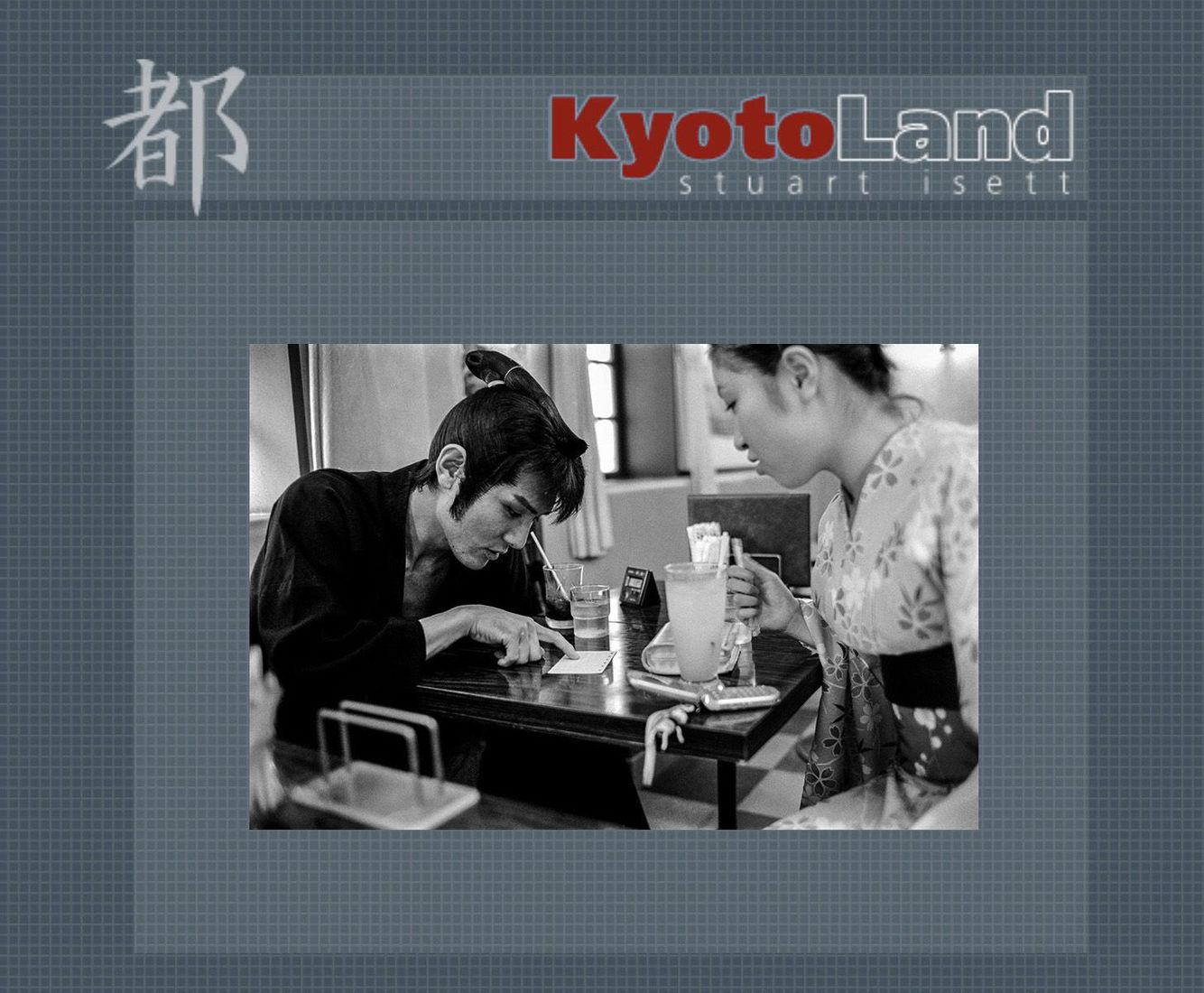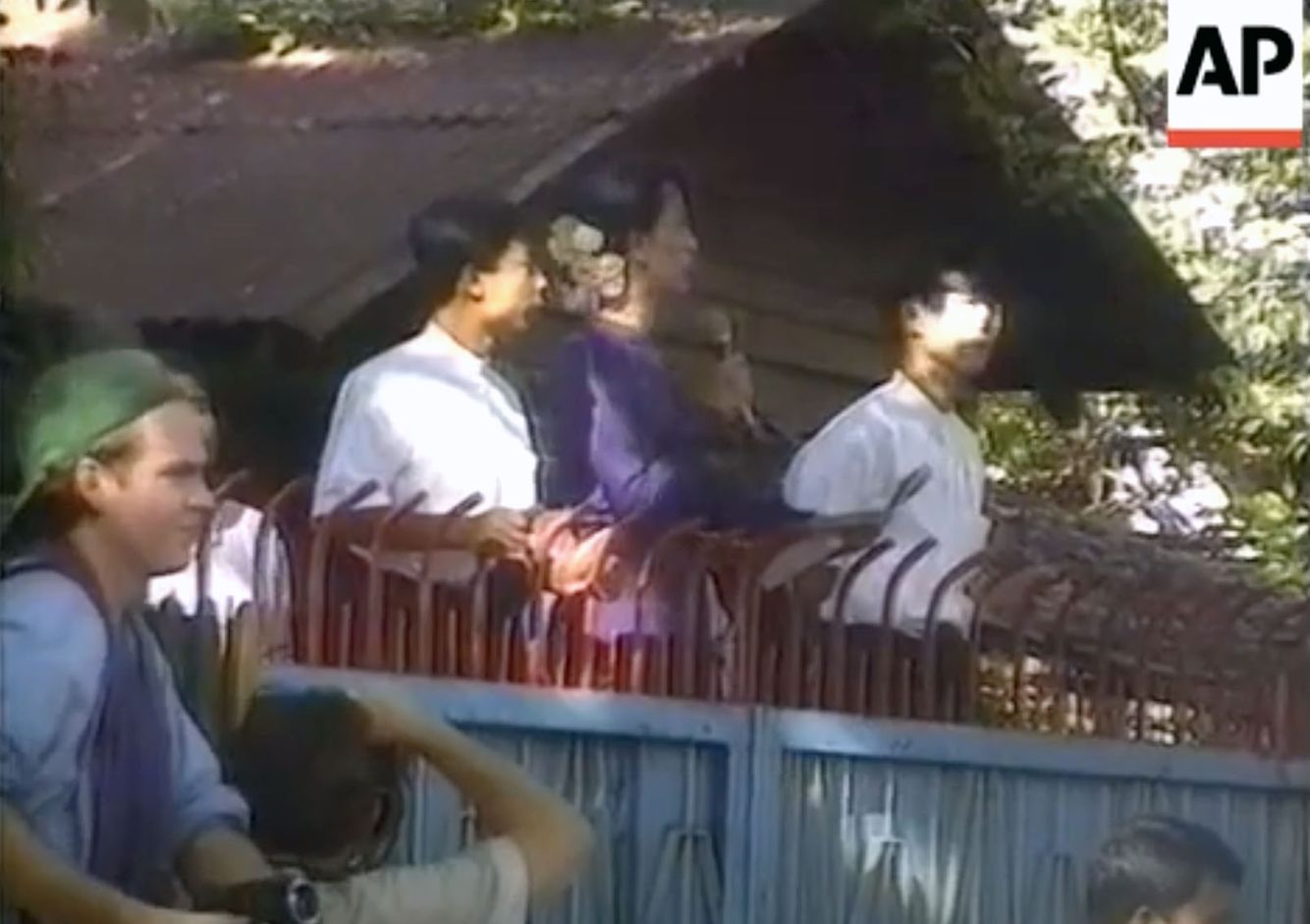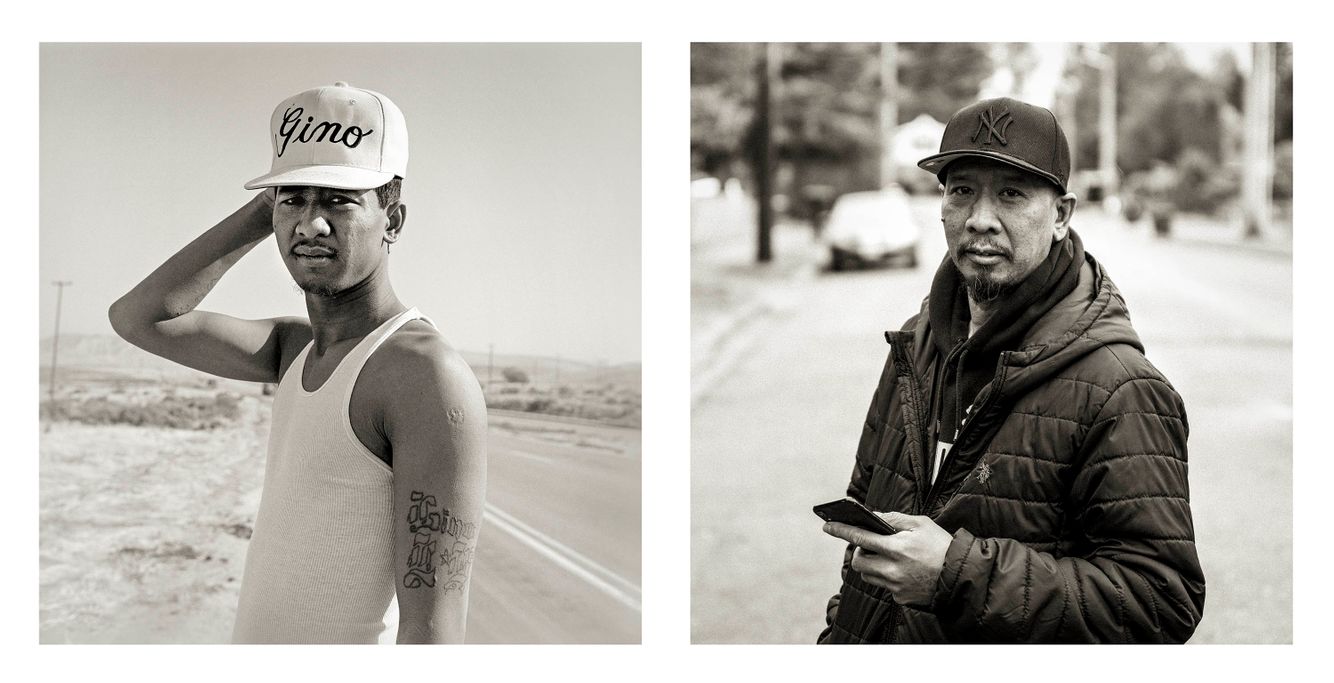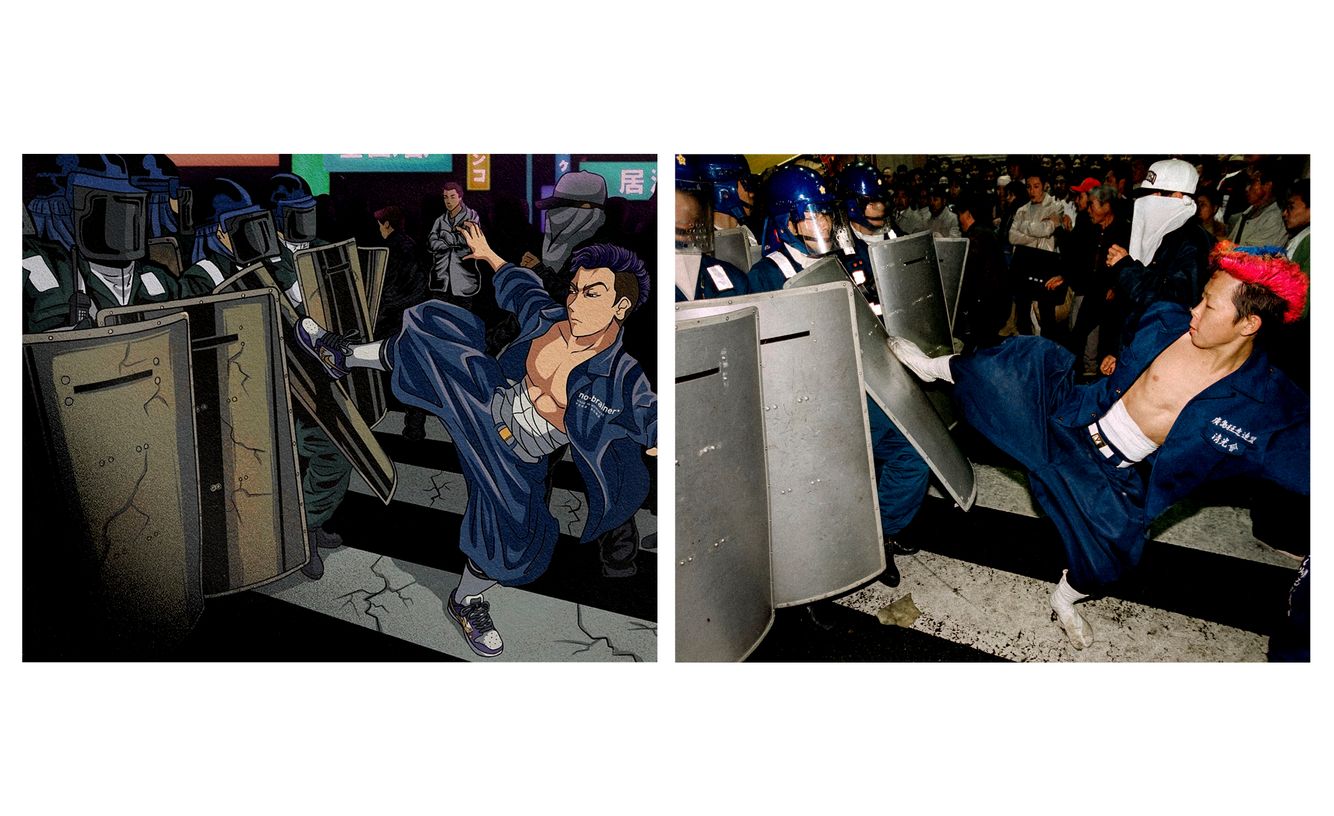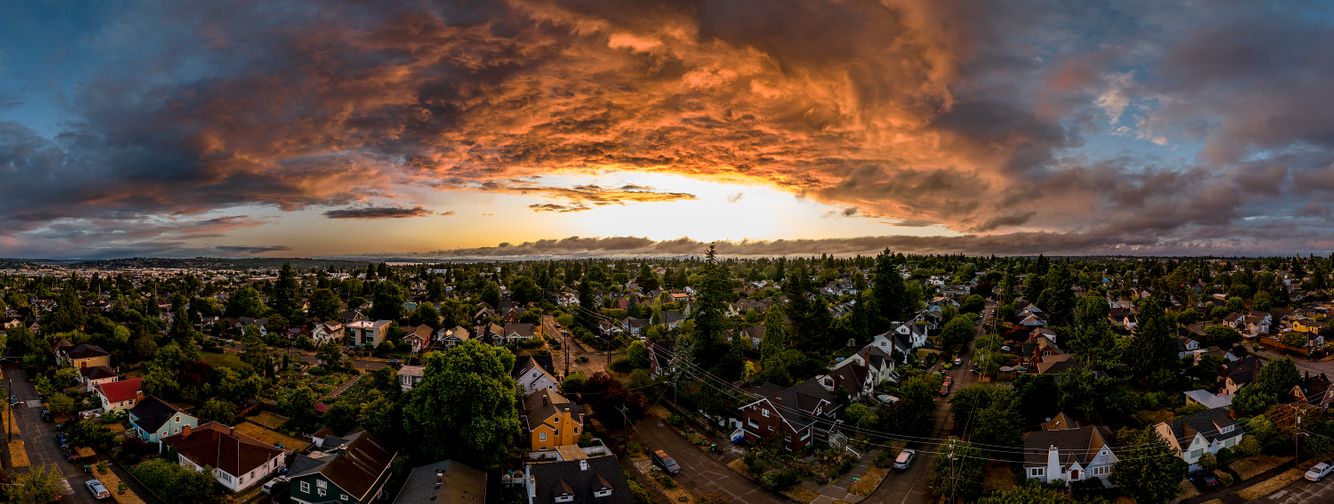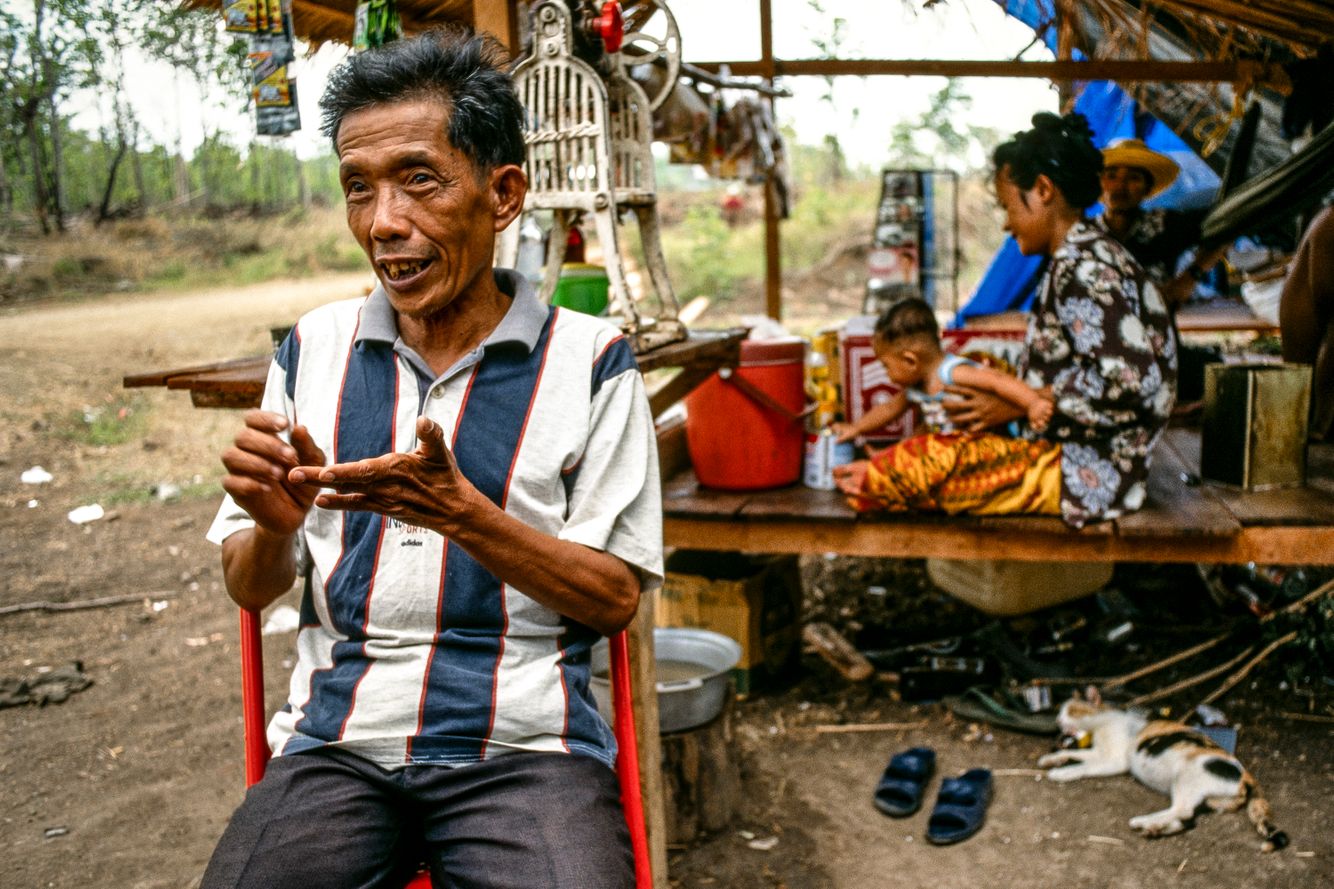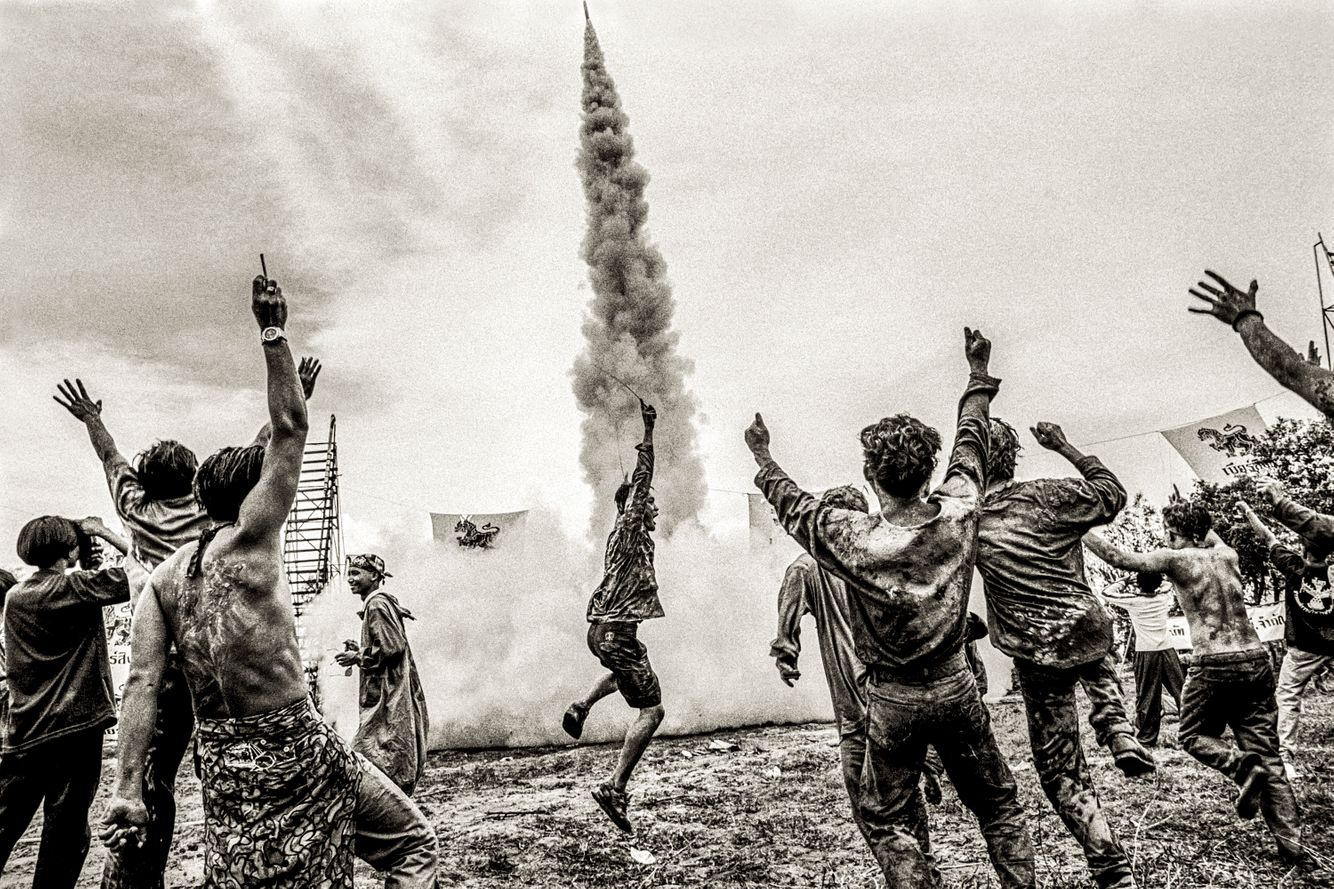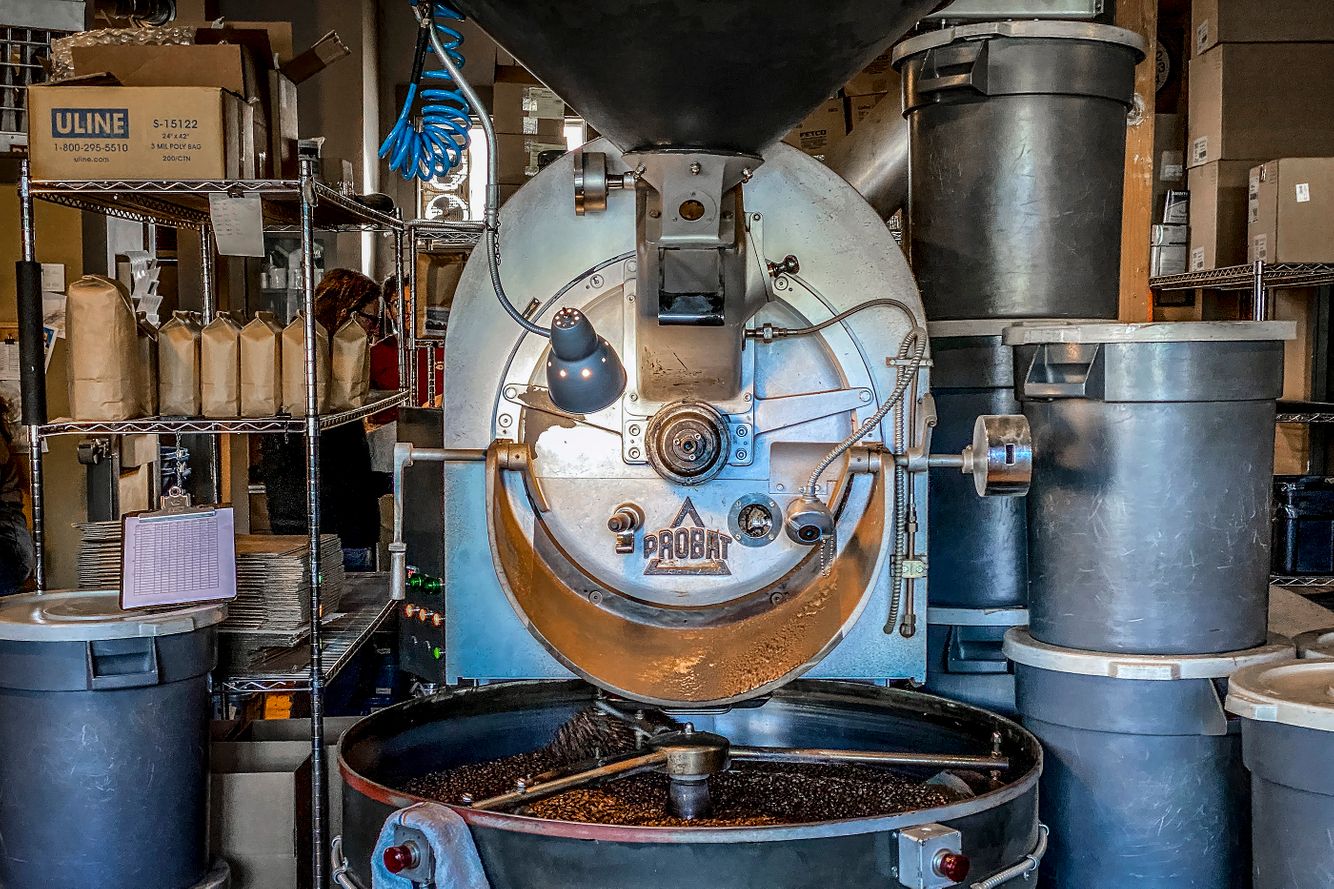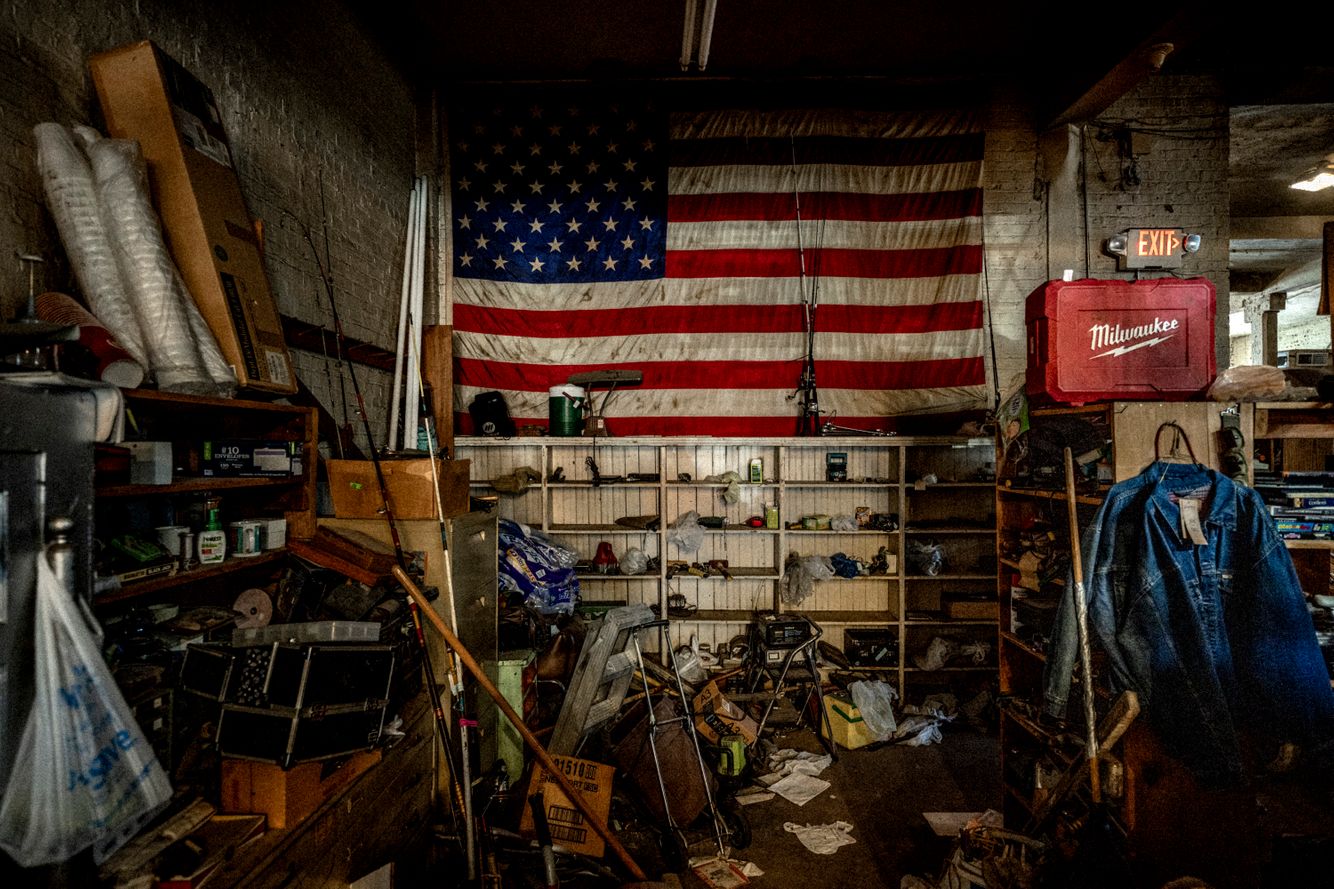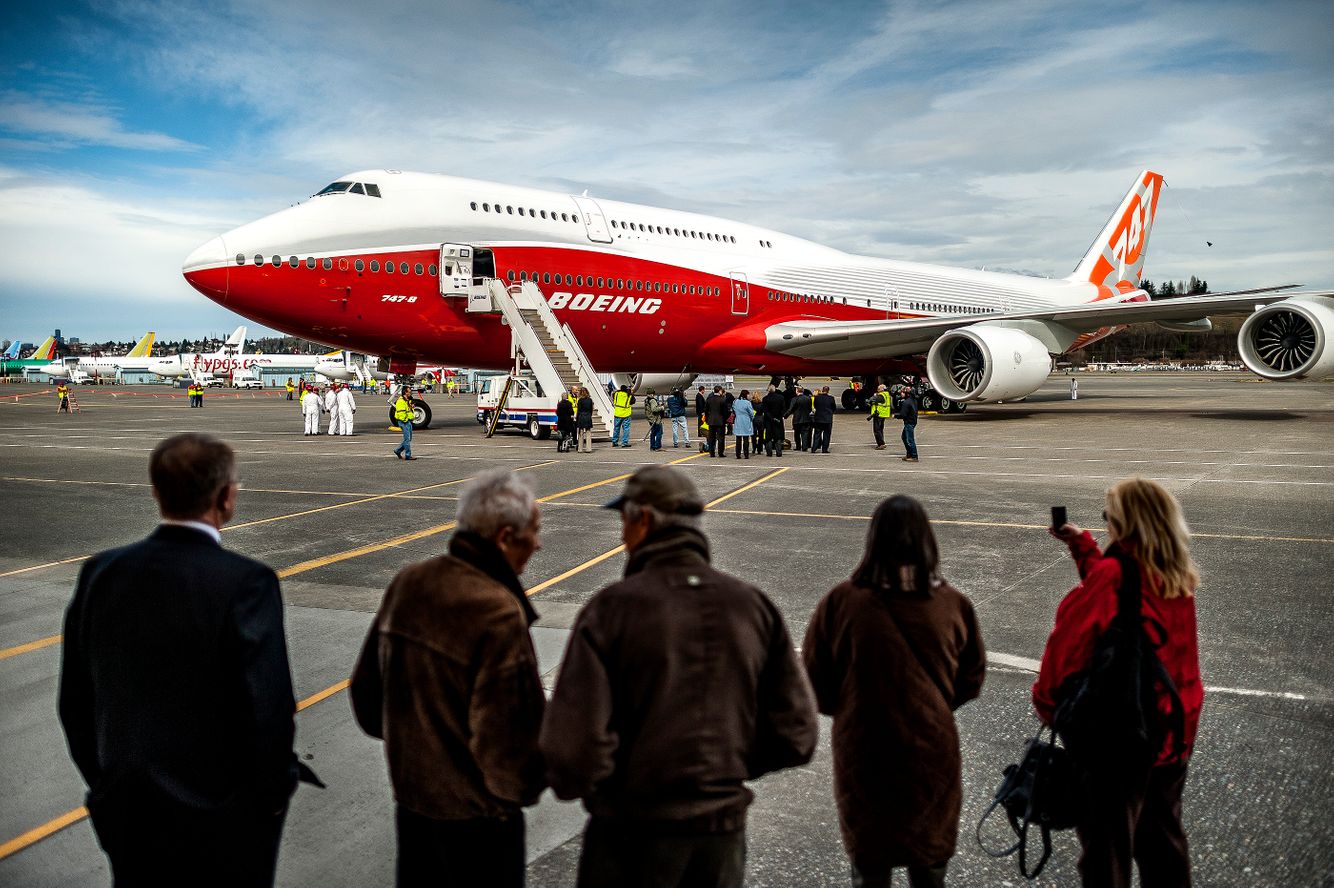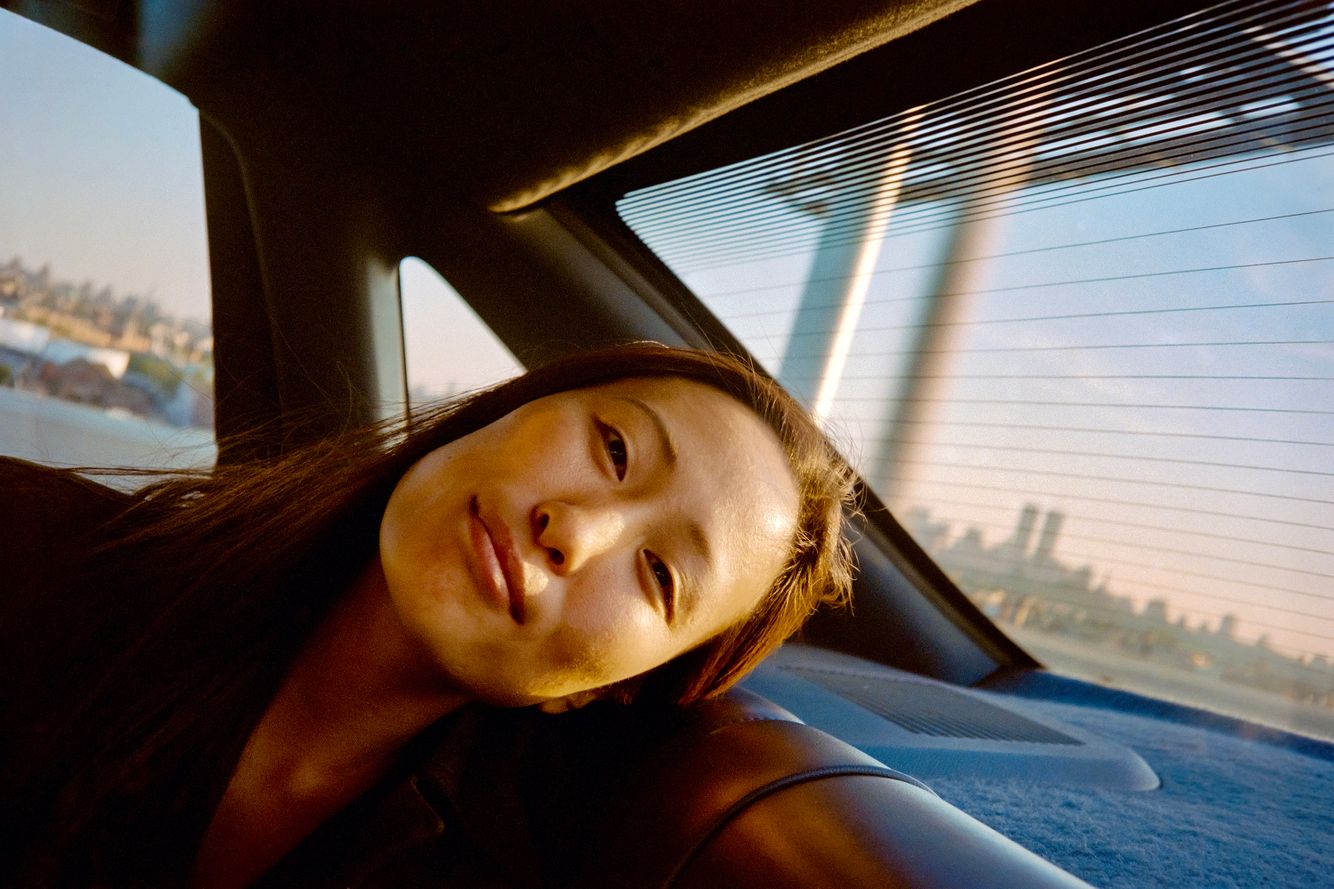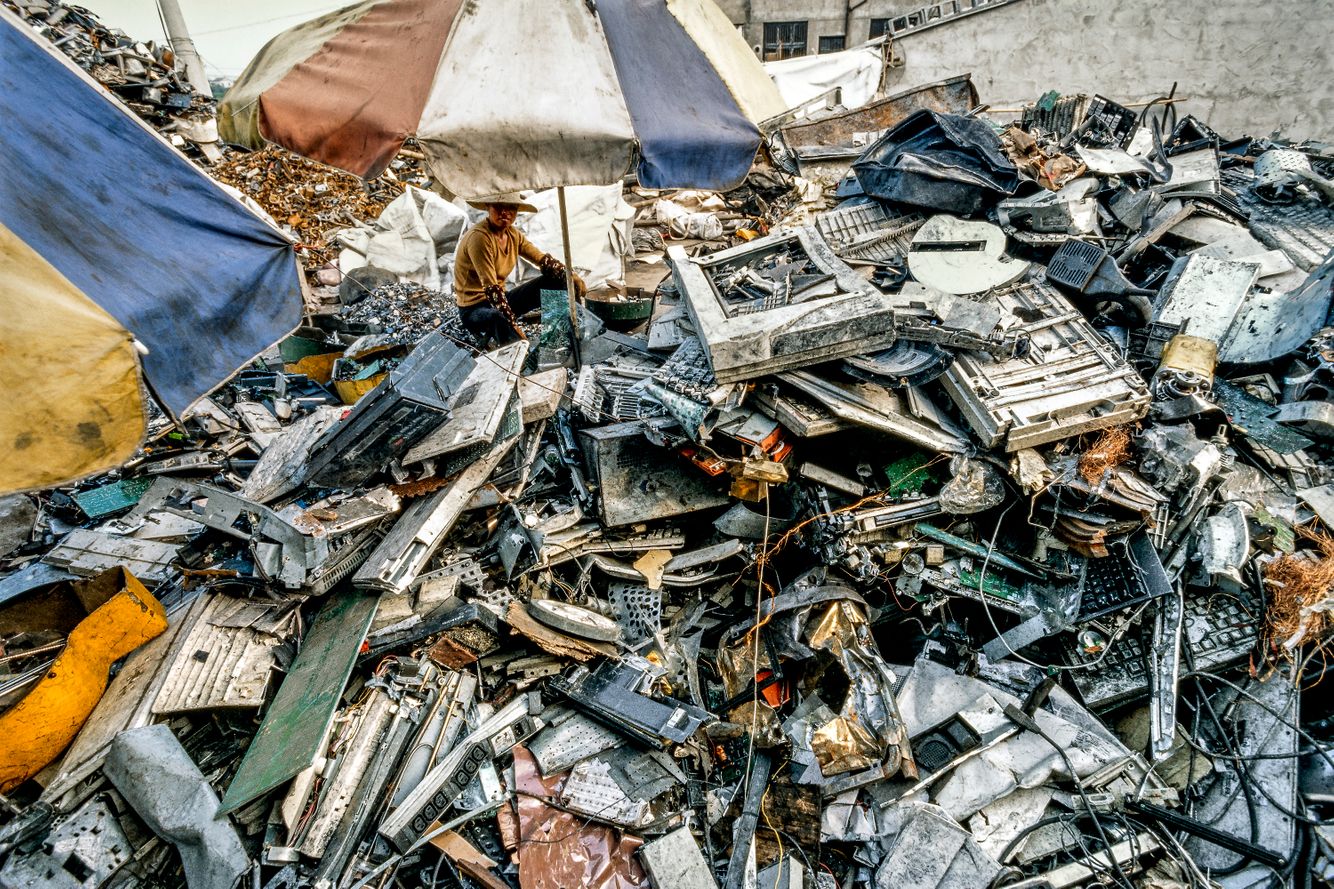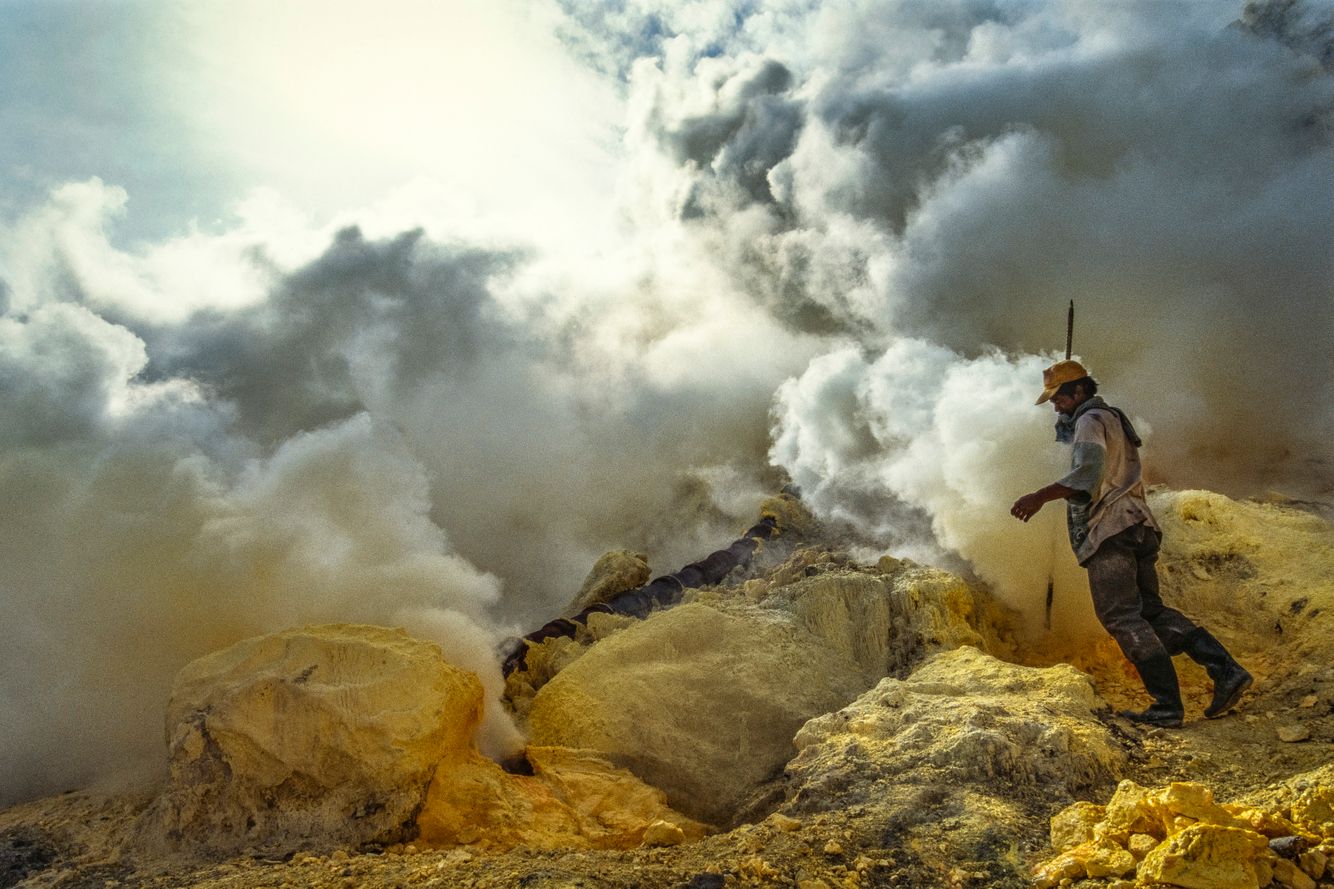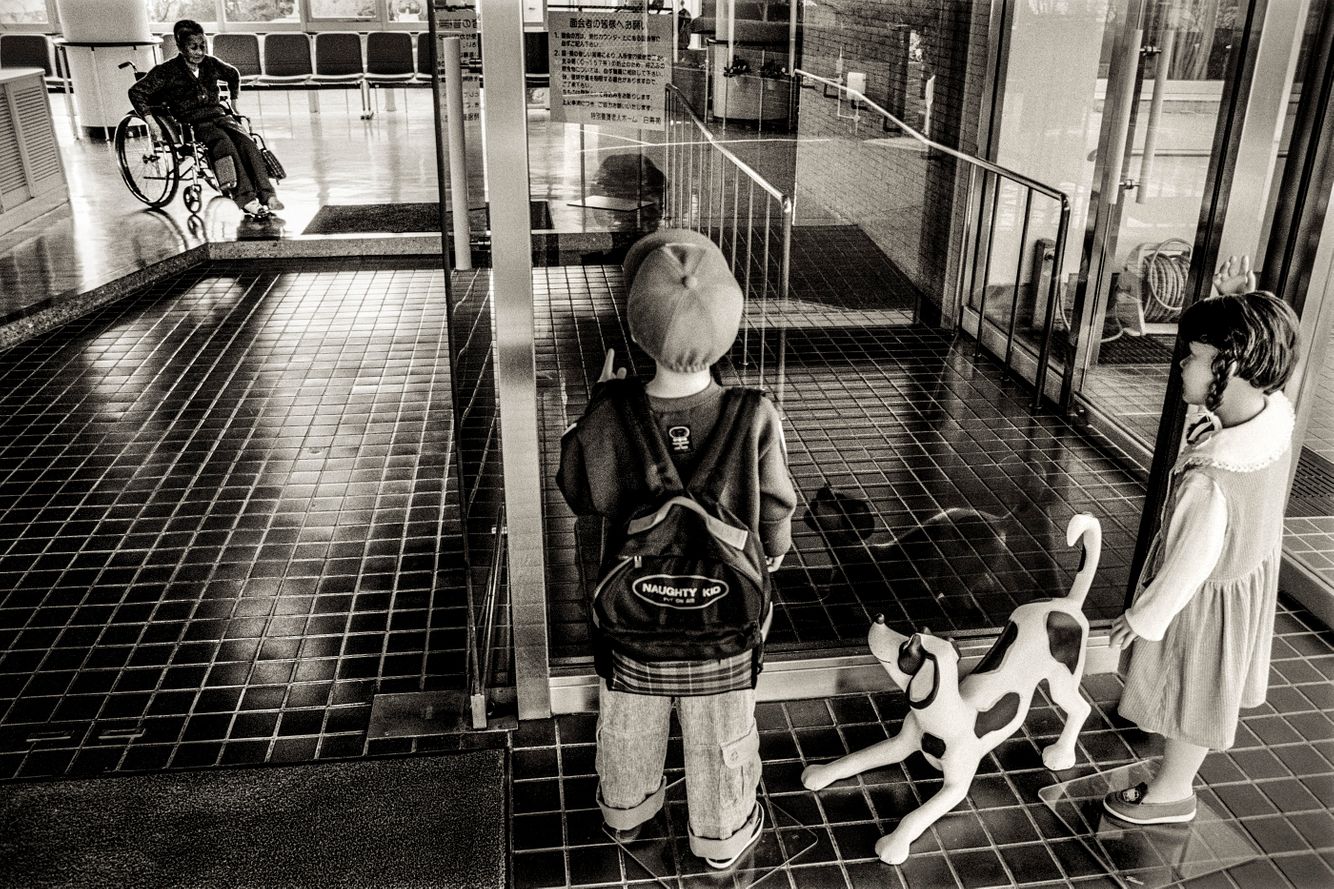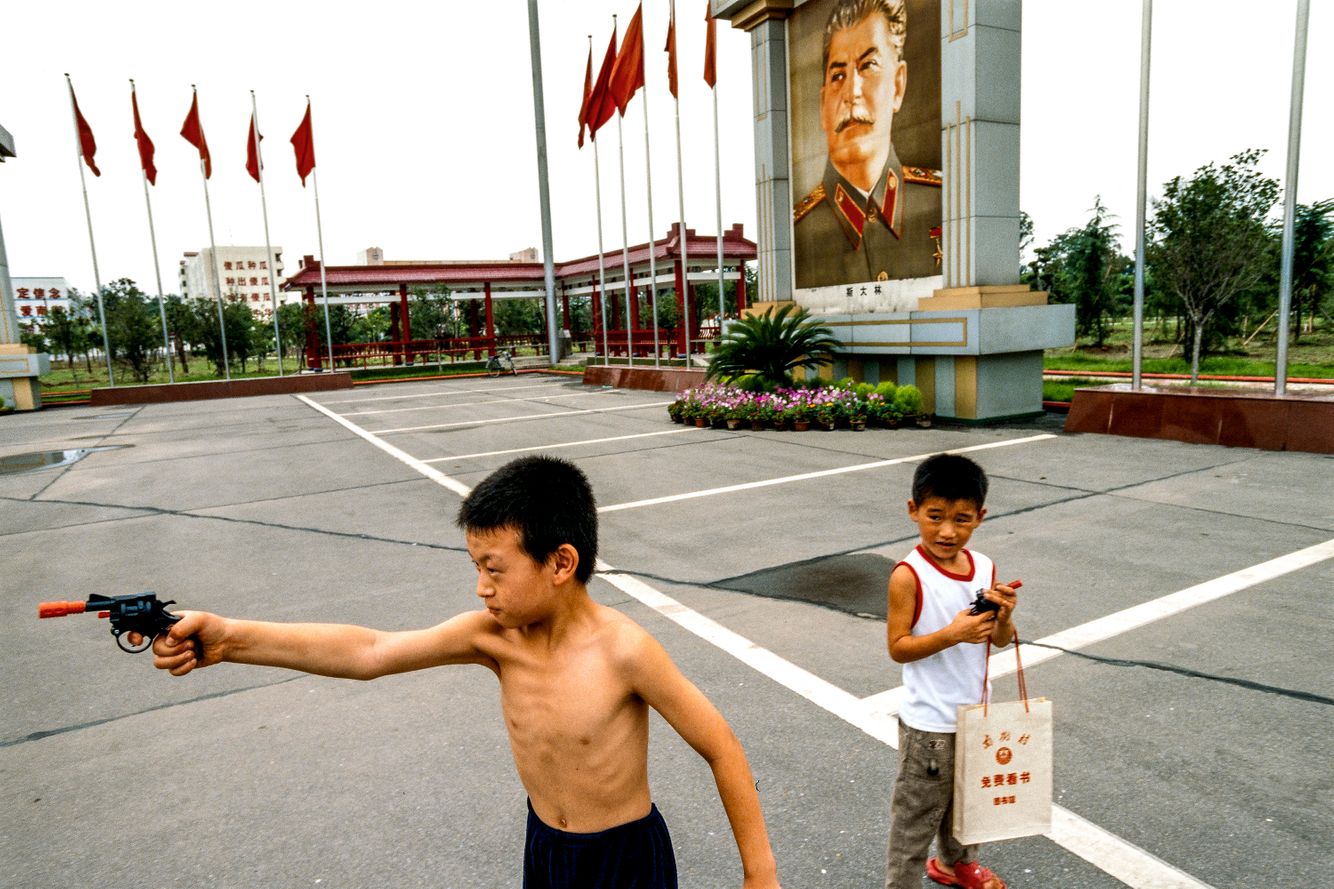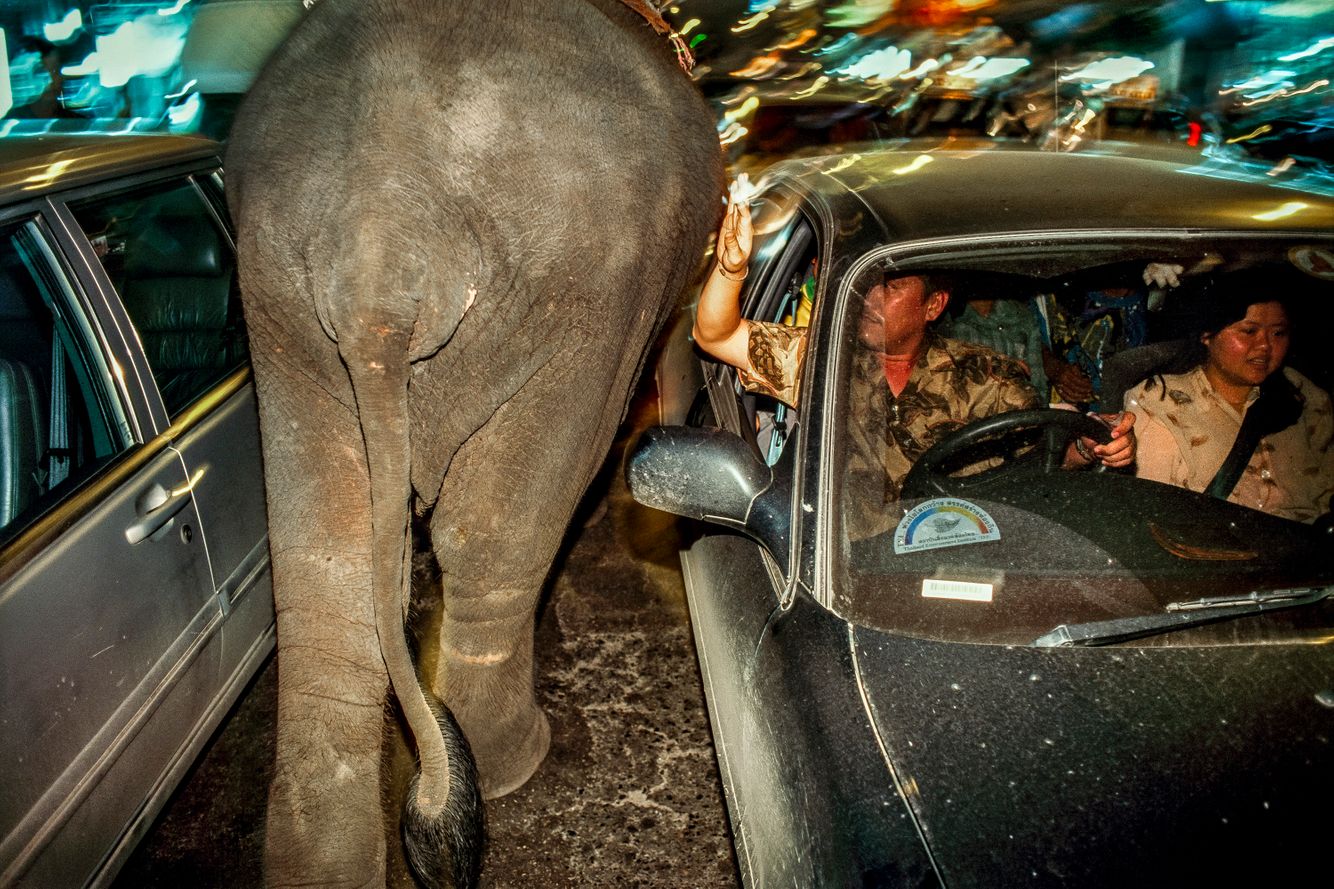BLOG
Recent work, old work & professional musings
The Best career advice I ever got
The best career advice I ever got was from my mom in 1989, when this photo was taken. It was a year after I finished college and after a year studying in Thailand, and I was unsure what to do with my life:
Mom: "You should be a photographer!"
Me: "Mom ... that’s my hobby."
Yep, she never let me forget that one.
Thanks mom, miss you.
PHOTO: Chicago, Illinois. 1989, when my mom married my stepdad Tom.
moreOklahoma Drift - Update
Happy to announce that Mark Jenkins and I have signed a contract to have This Land Press in Tulsa, Oklahoma publish “Oklahoma Drift”, coming in the spring of 2026! We couldn’t be happier to find this great publisher to back the project, especially one based in Tulsa and steeped in the history and culture of the state. Over the next 4 months we will be editing the book, traveling back to Oklahoma to work on two more stories that fill some holes, re-writing, re-editing images. It will be a busy 6 months.
OKLAHOMA DRIFT - CHASING BOB DYLAN’S AMERICA
When singer and songwriter Bob Dylan turned over his lifetime archives to a small museum in Tulsa, Oklahoma, we, like countless other fans, asked, Why Tulsa and why Oklahoma? The two of us - Mark as a professional writer/dramatist and Stuart as a professional photographer - set out on a journey to discover the answer. Three years and thousands of miles later, the answer to that question is this book with its blend of photography and essay that was consciously inspired by the classic Let Us Now Praise Famous Men, with writer and photographer working as equals, along with the chance encounters of Saint-Exupery's flying days, as well as Steinbeck's Travels With Charley. Stylistically, we attempted to emulate the vivid elegance of Joseph Mitchell's chronicles in The New Yorker of that city's characters and outliers, such as "Mazie," the ticket booth attendant at The Venice Theater.
morePanthalassa Energy
I'm finally able to share some of the images I've made over the past 4 years of the amazing work being done at Panthalassa, who are literally working on a moon-shot renewable energy project in the deep, deep ocean. From Panthalassa's website, "The open ocean is Earth’s largest and most power-dense renewable energy resource. We’re harnessing that resource to produce the cheapest energy on the planet for clean compute at sea and renewable fuels to shore."
moreSite Workshop Posters
One of my favorite clients, Seattle-based landscape designers Site Workshop, recently converted some of my work into these cool National park style posters. Love it! You can see more of my landscape work here.
more"Don't photograph protests"
I still remember an editor in New York once telling me not to include a protest image in my portfolio. I understood their point - protests can be too easy to document, access is easily given (just show up) and the editor wanted to see longer term photo stories that showed a "greater commitment to storytelling" . Plus I imagine every other photographer editors saw after 2011 had portfolios filled with protest images, all pretty much the same.
On the flip side, though, I've known plenty of amazing photographers who have made incredible work covering protests over the past decade, Rian Dundon's work in Portland and Yunghi Kim's work in NYC, being some of the best. So take all advice with a giant grain of salt.
2011 was also the time I started to notice there were as many cameras at protests as protestors, and the lines between journalists, police and protestors pretty much vanished, as evidenced the day I was clubbed by an anarchist right after the photograph of me here was taken; it was the first, and only time, I’ve been assaulted doing my work. The images here were taken during what I call ‘the great unwinding’ - the Occupy Protests, in 2011, in Seattle.
moreUnpublished Work
Talk to any photographer and they will tell you their "unpublished work" is usually far better than their published work - it's mainly our bruised egos talking, though, wondering why some photographs never got the attention we think they deserve. Taken from 2011 until 2021, the images below show the final years of production of Boeing's iconic 747, in its final iteration, the Dash 8. None of these images ever got published, even though I pitched them all over the place, from The New York Times to aviation magazines to online galleries. Boeing doesn't often give this kind of access to their factory floors to outsiders and when they do, it's usually brief and well supervised, so navigating around the Everett plant while trying to get interesting images is a huge challenge.
I'm particularly proud of this work, especially since as a 6 year old I flew on the original Pan Am 747 Clipper from London to New York and the plane fascinated me from then on. Maybe one day these images will get published.
moreYe Olde Internet
I try to avoid showing my age, just because I don't think it's relevant to my work. But then I realize it is very relevant to my work, and the foundations it was built upon, so finding 25 year old work is still up on the internet is one such moment.
Imagine my happiness when I recently discovered one of my first online exhibits is still up nearly 25 years after it was posted? With the tiny file sizes and basic design and fonts that only worked in the age of dial-up Internet? Zone Zero was one of the earliest portfolio websites, created by Pedro Meyer in Mexico, and that's still going strong today. The work he showed was from a 3 year project photographing Kyoto called KYOTOLAND, a project I plan on self publishing soon - the edit shown in 2001 was from the earliest stages of the work and only a few of the images have made the final book design.
I built my first website in 1997 shortly after moving to Japan, using HTML 1, uploading to the Japanese web service GOL - I was, in the world of photojournalism, a pioneer! That site has been lost in time, I always wished I'd saved it, but my URL and email have remained the same for 28 years now. One of the great things about freelancing is you often get weeks, sometimes months, with little to no work so web design, and some self-promotion, often filled those hours. It's something I wish more editorial photographers understood - most commercial photographers understand design and the need to promote themselves beyond their little bubble but such concerns are often anathema to many editorial photographers.
moreBlast from the Past
Recently found footage of me at work in Rangoon photographing Burmese opposition leader Aung San Suu Kyi. So odd seeing this after 28 years. We spent many days outside Daw Suu's house, in the sweltering heat, crushing crowds, juggling rolls of film and racing to make deadlines transmitting or shipping film out to New York.
Even though I don't do this kind of photojournalism work anymore (I still work on long term documentary projects), it was an excellent training ground for the work I do today.
"Ah, but I was so much older then, I'm younger than that now"
- Bob Dylan, "My Back Pages".
moreThe survivor - Gino's story
Sapeoun, aka Gino, posing (left) on the side of a road outside Bakersfield, California in October, 1993. In the photograph on the right, Gino stops briefly to let me take his portrait in Tacoma, Washington this week, almost exactly 30 years later. Stories like Gino's are why I became a photographer - a survivor of America's war in Southeast Asia, the Khmer Rouge genocide, a refugee, a member of some of the toughest Cambodian street gangs in the US. Someone whose life was shaped by war, genocide and trauma, but who has survived despite the odds stacked against him. Continues below.
moreImmortalized in Manga
When your work gets immortalized in manga! Singapore based sneaker customization artist Bob Ng at No-Brainer*, recently turned one of my images from a 1999 bozosoku biker gang riot in Hiroshima into a manga. Needless to say, my 13 year old kid (and a manga fan) is impressed! read more about Bob's design work here.
moreThe View from Above
The view 100 feet above my home in Seattle after rains passed through. I am loving my new Mavic 3 Pro drone - greatly improved file size and tonal range, good colors. Manually stitched panorama, shot with RAW files and assembled in Lightroom. Onwards and upwards!
moreComrade Duch
From the Yale Genocide Studies program: Duch, head of the Tuol Sleng prison complex [S-21], was a former schoolteacher named Kang Kech Eav. Duch oversaw a precise department of death. His guards dutifully photographed the prisoners upon arrival and photographed them at or near death, whether their throats were slit, their bodies otherwise mutilated, or so thin from torture and near starvation that they were beyond recognition. The photographs were part of the files to prove the enemies of the state had been killed. Duch even set aside specific days for killing various types of prisoners: one day the wives of “enemies”; another day the children; a different day, “factory workers.”
–Elizabeth Becker, When the War Was Over
My photograph of Comrade Duch taken in 1999. Duch's real name was Kaing Guek Eav and he served as the Khmer Rouge's chief executioner from 1975 until 1979 at the Tuol Sleng prison, or S-21, before fleeing Phnom Penh and going into hiding after the Vietnamese invasion. When I photographed him he was still living freely under a pseudonym in the Khmer Rouge controlled village of Samlot, in western Cambodia. I was traveling in Pailin Province at the time, working on a story on the Khmer Rouge with my friend, writer and photographer Nic Dunlop. Nic recognized Duch and asked that I travel to the village of Samlot to confirm it was indeed him; Nic was simply couldn't believe his own eyes. It was, and still remains, one of the few times doing my work I truly feared for my life. Duch was surrounded by Khmer Rouge soldiers who no doubt knew who he was, and the secrets he still held, while we sat and had lunch with him.
moreHOW THE Rocketmen of Yasothorn SAVED MY CAREER
By the spring of 1995, I was already a year into my so-called photography "career". I had started well apparently - fresh out of a photography graduate program in 1994 in Chicago, my first assignment was a three week assignment with the legendary editor Kathy Ryan at The New York Times Magazine, hired on the basis of a project on Cambodian gangs I did in the US. By June of 1994 I had moved to Bangkok with my then girlfriend, and now my wife, Jennifer, and I had plans to base myself there and learn the ropes. Within weeks I had assignments with The New York Times in Malaysia, Thailand and Burma. Wow, this is easy!
Then the phone stopped ringing. For a year.
I had to sell my workhorse 80-200mm lens to pay rent. I went back to teaching English at the same school I had worked at in Bangkok in 1988 when I lived there as a student studying Thai. I did a few random assignments for the Associated Press but had no clue what they needed or how to deliver the work and was clearly not cut out for wire work. Even though our rent was only $160 a month, by May of 1995 I was close to quitting photography when a friend suggested I go to northeast Thailand, often called Isarn, and photograph the rocket festival they have there at the beginning of every rainy season. I had so little money, I had to take the cheapest, non-air conditioned bus from Bangkok, the one that stopped at every village along the entire ride, which was close to 14 hours. But the bus was filled with Isarn farmers returning home, drinking, singing and reveling the whole time. I was on the right track, and on the right bus. I was also part of the whiskey-bottle-and-fork rhythm section while my traveling companions sang and did ramwong folk dances in the aisle for most of the journey.
moreHerkimer - The lightstalkers coffee shop
Ode to our neighborhood coffee shop, Herkimer Coffee shop on Greenwood Avenue here in Seattle. We’ve been taking the girls there since we moved to the neighborhood in 2008 - nothing like a hot chocolate and a sweet treat for them to allow me to take a few photos.
It's a lightstalkers dream too - large windows facing west on the top of a hill. The space is flooded with light, I've even used for an occasional photo shoot. The girls are older now and the sweet treats aren't enough to get them to let me take photos, but I saw a young dad in there with a 1 year old, and went archive digging for some of the better of the hundreds of images I've taken there.
Herkimer also serves the best damn coffee in Seattle.
moreOKLAHOMA DRIFT - Chasing Bob Dylan's America
Starting in 2021, I partnered with the retired actor and playwright Mark Jenkins - who drove from his home in Laramie, Wyoming to see Bob Dylan perform in Denver in February, 1964 - to explore the new Bob Dylan Center in Tulsa. Two Seattle-based artists and Dylan enthusiasts, separated by a generation, Mark and I are traveling throughout Oklahoma exploring how Dylan's art influenced the way we see the world and what the state says about America. With Mark’s notebooks and my cameras, we will continue to wonder why Dylan agreed to put his personal archives in the state and through the voices and stories we find, seek out how the state reflects back on his uniquely American art.
- drift (noun): Being driven off course. Deviation from a course. Move in a casual or aimless manner. A natural course or tendency of events or actions. The underlying meaning, import, or purport of what is spoken or written.
- drifty (adjective): Full of secret aims, wily.
When asked why he agreed to send his archives to the state, Dylan reportedly said he preferred “the casual hum of the middle of the country”. As we roam Oklahoma, with Tulsa as one of America's best crossroads cities, we will search out themes of justice, civil rights, faith, inequality, crime and outlaws, beauty, love, folk life, protest, and of course, music. Oklahoma tells the American story probably better than any other state - a place where people came with their hopes and dreams, often only to discover its failures and injustices. Oklahoma is, in many ways, a mirror to America's lofty principles, a place where the country's long, often brutal history has been compressed, but still oozes to the surface like the sea of oil that once lay under the land.
moreOn the Corners of Argyle and Glenwood - Second edition
Happy to see Catfish books release a second edition of my book 'On the Corners of Argyle and Glenwood', this time with a beautiful yellow/gold outer sleeve! Order yours here.
"As a young graduate student in photography in the early 1990s, Stuart Isett found himself on the corners of Argyle and Glenwood streets in Chicago, photographing Cambodian refugees who had settled on the city’s north side near his apartment. Isett entered a world which would define his practice, spending much of the next 25 years working in South East Asia, often returning to work on issues affecting the Cambodian diaspora.
Nearly 30 years later, in collaboration with Cambodian-American activist Silong Chhun and Pete Pin, a Cambodian-American photographer, Isett revisited the Chicago work. Together they re-sequenced and contextualised the series. Chhun and Pin would have been the young boys in the back of the room in many of Isett’s images, watching their older siblings who were Isett’s main focus, as they struggled to adapt to life in America while burdened with the trauma of war and genocide.
moreBon Voyage
Boeing's last 747 jumbo jet took off today from Paine Field, next to the Everett plant where the first 747 rolled out in 1969. I've spent hundreds of hours flying around the world on them since I was a little kid. The last plane may be out the door but we'll get to see them in the air for many decades to come. Bon voyage!
moreQueen of the Skies
As Boeing prepares to roll out and deliver its final 747, a cargo version of the plane's final iteration, the 747-800, here's some images I've taken of its construction, delivery and first flight over the past decade. It will always be the most beautiful plane ever built, sleek and elegant, unlike its rather bloated rival the Airbus A380 which I also photographed being developed and built.
The first flight I remember taking? The Pan Am Clipper from London to New York on a Boeing 747-121. It was a flight that led to a lifelong fascination with airplanes and has taken me to the manufacturing floors of the world's leading airplane makers, as well as airports around the globe where I've learned to safely capture powerful and creative images in the brief time photographers are typically given to work around aircraft.
I only realized later that Joe Sutter is second from the left in the image to the right. I still kick myself for not getting a portrait of the 747s legendary architect. Joe passed away in 2016.
To this day, I still get excited when I see a 747 roll by while I wait at an airport gate with my family - it's hard to explain to my kids! The final delivery of a 747 is not just an aviation moment, it's also a cultural moment. It's the end of the era when we imagined flying could be adventurous and romantic, not mundane. I'm lucky to have experienced it.
moreMy love she speaks like silence
My new bride after our honeymoon in New York, June 1997. Jennifer and I headed to the airport and our return flight to our home in Bangkok; a few months the later we moved to Tokyo. I've always loved this image but only recently got a decent scan of it, and love it more. My love, the light, the Twin Towers; our lives totally in limbo as we prepared to take the plunge and live in Japan.
Now it's two kids, a cat, mortgage, college 529s, bed by 930 pm. But watching a dear friend losing his wife of 30 years to cancer this week, puts it all in perspective. Jennifer is still fearless though.
- My love she speaks like silence
- Without ideals or violence
- She doesn't have to say she's faithful
- Yet she's true, like ice, like fire
- Bob Dylan, Love Minus Zero
moreDeath in Cambodia Podcast
Proud to have joined Dorothy Chan on her podcast "Death in Cambodia". Dorothy created the podcast to interview her father and talk about his experiences under the Khmer Rouge during the Cambodian genocide, exploring issues of trauma among Cambodian refugees in the US. It was in that context she wanted to talk about my work on Cambodian refugees in the early 1990s, along with Pete Pin and Silong Chhun who both helped create my book "On the corners of Argyle and Glenwood".
moreE-waste in China
Work from 2005 on e-waste in China, then a center for the global trade in toxic electronic waste, much of it arriving in the Chinese port city of Taizhou. 24 hours a day ships arrived in the city's harbor carrying cargo of waste, including millions of computer parts. These parts flowed out of the port in trucks into the city and hinterland where hundreds of tiny work shops broke down the parts, melting off the precious metals and using acids to separate gold from circuits boards, mobile phones, monitors and other computer parts. Neighborhoods were filled with the noxious and toxic fumes of this unregulated industry and thousands of men, women and children are exposed to a toxic cocktail of fumes and dust released, often being released right next to farming fields.
This work was used widely by various US non-profit groups fighting the trade and e-waste that successfully banned exports from the US and Europe. It was also shown at the prestigious Visa Pour L'Image photo festival in Perpignan, France in 2006.
My time in Taizhoiu also marked the third time I was detained in China doing my work. Taken along with my fixer to a police station to be questioned for 4 hours, I had already hidden my film in our car, carrying only dummy rolls into the station. I had learned early on in my work in Asia to never argue with authorities - play stupid, be humble and apologize and invariably you'd be let go with a warning. As I left the police station the lead interrogator suggested I go take photographs of the Great Wall of China instead.
moreThe Sulfur Miners of Ijen
IJEN, Indonesia - November, 1998
In East Java, Indonesia, hundreds of miners face deadly smoke to mine sulphur, or “devil’s gold.”, found inside the still active Ijen Volcano. They risk respiratory illness and death to haul 200-pound loads of sulphur up the crater walls to sell. Throughout their workdays, the miners battle toxic fumes and it’s common for miners' shoulders to swell for the weight of their loads. Running down the sides of the sulfur mounds are pipes laid by the miners which reach deep into the volcano, channeling the sulfur laden gas which cools at the surface allowing the ‘yellow gold’ to condense and gather in vibrant yellow pools. All over this man-made sulfur hill miners can be seen feverishly chipping away at solidified sulfur, gathering large chunks for the arduous climb out of the volcano\, with the sulfur hung from two baskets on the ends of poles the miners climb back out of the crater. Most of the miners are barefoot and the strain from the weight of the sulfur arches their backs, digging the poles deep into their backs. Despite the miners’ strength, few can manage to walk more than 50 meters without stopping to rest. The scent of traditional Indonesian cloves fills the air whenever the miners rest, offering a well needed break from the stinging fumes of Ijen.
moreTHE ISLAND OF THE OLD
ORIGINALLY PUBLISHED November 1999. Photographs by Stuart Isett & text by Richard Lloyd Parry.
In the Seto Inland Sea, a miniature ocean of warm currents in Japan's south-west, is an island called Oshima which might have come out of Odysseus's adventures or Gulliver's travels. Its name means simply "Big Island", although from end to end it is less than 20 miles long. Shaped like a round tropical fish with an elongated crescent- shaped tail, it lies cradled between the mainland islands of Honshu, Shikoku and Kyushu. Centuries ago, pirates operated out of its coves, and in 1943 a famous Japanese battleship was torpedoed and sunk just off shore. Nothing remarkable has happened on Big Island since that day. Yet it is one of the most remarkable places in Japan.
Geography, politics and economics have made of it a demographic monster, a social time-bomb, and a warning. In a country with the world's fastest ageing population, Oshima has the most aged population of all. Every year the number of young people there dwindles. Every year the elderly, and the very elderly, increase. If Homer or Swift were still around they would recognise its potential as a symbol of extremity and folly. Oshima is a modern fable, a place cursed and blessed: the Island of the Old.
moreModel Communist Village
The streets of Nanjie village, a model communist village in the central province of Henan, are usually deserted as villagers are not allowed to own cars making the village feel more like Pyongyang, than your typical modern Chinese town. It collectivised its agricultural production and industry in the mid 1980s - when the rest of the country was doing the opposite, introducing market reforms put forward by former leader Deng Xiaoping.
It continues to be run on Maoist egalitarian lines and has become something of a tourist attraction because of its staunch adherence to the values of the past.
moreThe Elephant Beggars
A two part photo essay on elephants and their owners who were forced in the 1990s to move to Bangkok to beg for donations and food from Thais to survive. The project was photographed from 1996 to 1999, working with a group mahouts I met living in an encampment off Phetchaburi Road. Thailand banned so-call urban elephants a few years after I worked on this project, published in several european publications and a Japanese magazine.
The second part of the project took me up north to Lampang Province where an elephant sanctuary was built for unemployed elephants as well as those injured in road accidents.
“These animals are the symbol of our country. They have worked for centuries for the Thai people in war and in peace and now we are abandoning our friends in these so-called modern times”, says Soraida Salwala, founder of Friends of the Asian Elephant, a non-profit organization that has established the world’s only elephant hospital in the Northern Thai province of Lampang. Soraida's missionary zeal might be all that saves the gentle giants. In the past 50 years Thailand’s wild elephant population has declined from 40,000 to 2,000 and the domesticated population has dropped from 11,000 to 3,000. As forests have been cut down the elephants’ natural habitats have all but vanished. In the age of the car, the elephant is seen as old fashioned and unnecessary.
more
